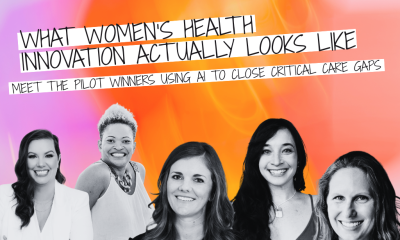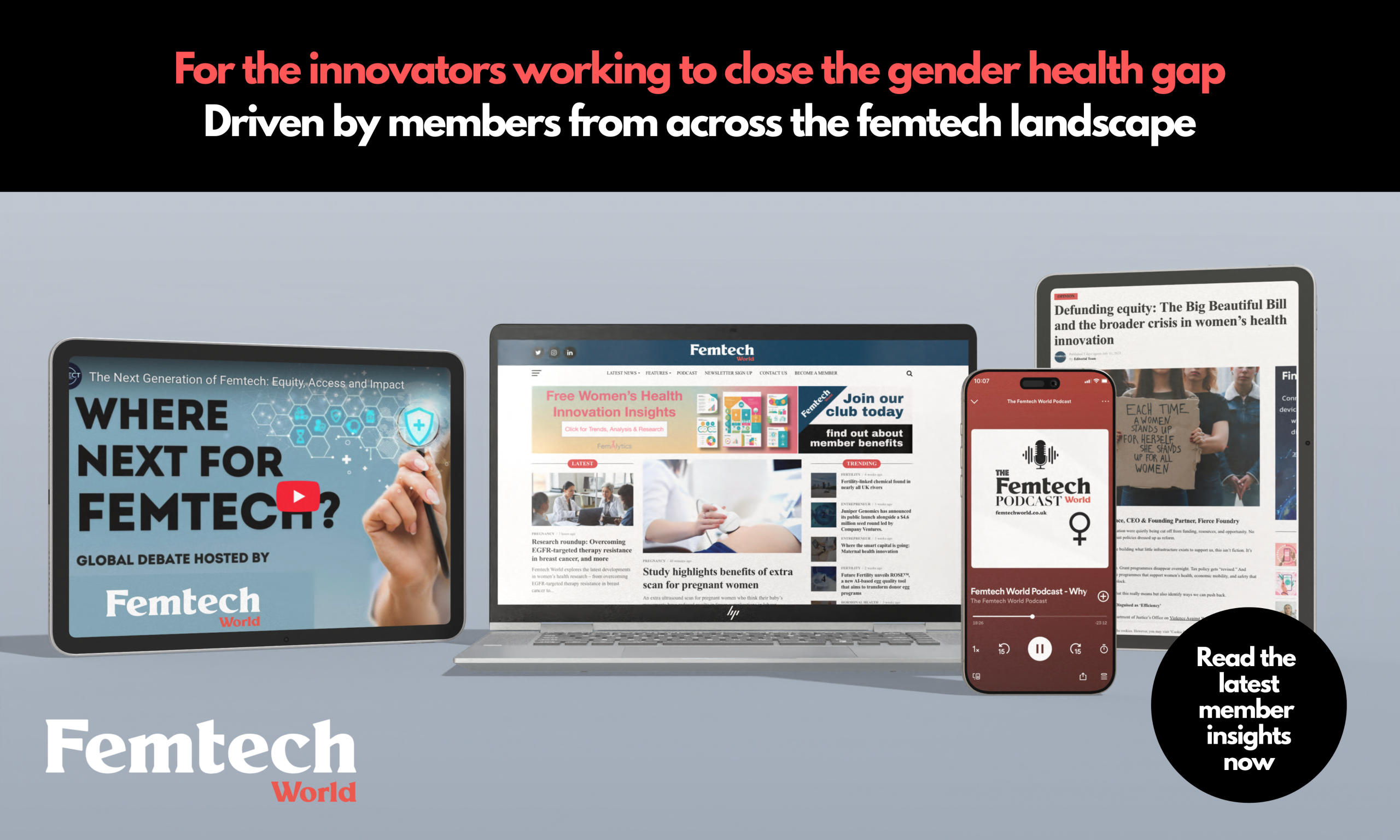Events
Women’s Health 2.0: The Era of Scale
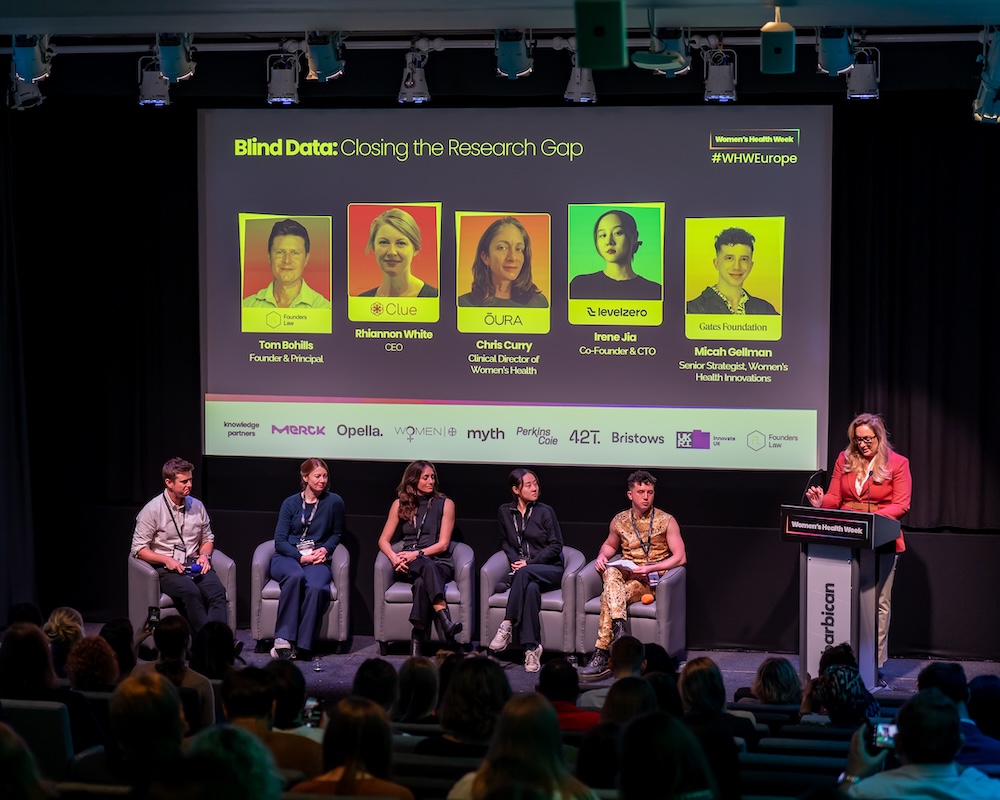
After two years of uniting the global women’s health ecosystem to drive impact and investment, Women’s Health Week USA has announced the central theme for its 2026 summit: Women’s Health 2.0 — The Era of Scale.
Returning to New York on May 13–14, 2026, the event signals a pivotal moment for the sector. Innovators are no longer just building; they’re scaling.
Investors are increasing activity. Corporates are moving from exploration to strategic commitment. And across the industry, momentum is accelerating at a pace not seen before.
A sector entering its scale phase
This year’s theme reflects a maturing market, one where clinical validation, commercial models, reimbursement pathways and distribution strategies are now centre-stage.
Women’s Health Week USA 2026 will spotlight the organisations translating innovation into real-world adoption.
From the key program themes have just been released this week, attendees can expect:
- A sharper focus on commercialisation and growth, including reimbursement, regulatory clarity and distribution models.
- Deeper investor engagement, with expanded opportunities for targeted 1:1 meetings.
- Two expanded Innovation Showcases, highlighting the next generation of breakthrough founders driving impact at scale.
- A more global attendee base, bringing together more than 600 leaders spanning innovators, investors, corporates, and policy makers.
- New session formats designed to maximise meaningful connection and deal-making.
These developments reflect a broader shift across femtech and women’s health: the move from early innovation to adoption, acceleration and scale.
Shaping the future of women’s health
As one of the sector’s largest global gatherings, Women’s Health Week USA continues its mission to facilitate strategic partnerships that deliver both commercial growth and improved health outcomes for women worldwide.
Over the coming weeks, the organisation will release early speaker announcements, agenda themes and opportunities for innovators, investors and corporates to take part in this year’s programme.
Don’t miss out – register your interest here to receive all the updates as they’re released.
Diagnosis
Stockport NHS Foundation Trust ends the “silent era” with CardMedic roll-out

Stockport NHS Foundation Trust has gone live with CardMedic across the organisation, enabling its 6,300-strong workforce to communicate more clearly and confidently with patients who face language or communication barriers.
CardMedic is a digital healthcare communication platform that allows staff and patients to communicate safely and effectively irrespective of language barriers, cognitive impairment or literacy.
The platform provides instant access to live interpreters in 200+ languages via Language Line, alongside thousands of clinically validated scripts in multiple languages and formats, including British Sign Language (BSL), Easy Read, and Read Aloud.
It also supports health literacy for same language patients by explaining information in plain language, clearly and succinctly.
The Trust provides acute and community health services to a population of around 300,000 people across Stockport.
Pam Fearns, Chief Nursing Information Officer at Stockport NHS Foundation Trust, led the project’s implementation.
“CardMedic will enable patients to voice their needs where previously they may have struggled to communicate them,” she said.
“All conversations — such as asking whether someone wants a cup of tea, explaining a procedure, or offering reassurance — play a vital role in ensuring inclusivity.
“CardMedic enables equality across our services.”
With a diverse community, reliance on face-to-face interpreting has led to rapidly increasing annual costs, and communication barriers have increasingly impacted patient experience and safety.
Introducing CardMedic will help address these pressures by providing staff with a single point of access to a suite of clinically designed communication support tools.
The cost-effective, vendor-agnostic platform connects staff to the Trust’s existing language service providers via its Call an Interpreter feature, accessible on any device and any location.
Streamlined access will reduce use of disparate and ad hoc solutions, empowering staff to deliver more efficient and equitable care.
This groundbreaking collaboration will see CardMedic deployed across 455 SPARK Fusion® patient bedside devices on 20 wards at the Trust’s Stepping Hill Hospital.
This integration brings universal communication support directly to the bedside, giving patients and clinicians greater access, privacy, speed, and confidence in every interaction.
The Trust has taken a “big bang” approach to launching CardMedic, introducing it across all its acute and community settings. From day one, it has been available in all inpatient areas to maximise reach and equity of access.
Key areas of engagement include emergency, maternity, and acute medical units, supported by digital nurses, midwives, and clinical champions across the organisation.
The rollout also extends to community staff, including community midwives, school nurses, allied healthcare professionals, Macmillan nurses and district nurses.
The launch is backed by an extensive communications campaign using the slogan ‘the silent era is over’.
This term was coined by Karen Lawrence in the Digital Skills Team following discussions with the Digital Nursing Team about giving a voice to the “silent patient”.
This gave her the idea of silent movies in black and white. Now the introduction of CardMedic is bringing colour back to these patients as they are no longer silenced.
The rollout reflects the Trust’s commitment to its core CARE values of Compassion, Accountability, Respect, and Excellence.
It also aligns with regional efforts to reduce inequalities and national priorities such as the Patient safety healthcare inequalities reduction framework, the Accessible Information Standard, and the Core20PLUS5 Health Inequalities Programme.
The Trust’s passion for equitable care is evident throughout the partnership.
The top five non-English languages spoken in the local area are Farsi, Urdu, Arabic, Kurdish Sorani, and Cantonese. To support the Trust’s community, CardMedic is adding Kurdish Sorani to its platform for the first time.
Dr Rachael Grimaldi, CEO and Co-Founder of CardMedic, said: “Stockport NHS Foundation Trust has demonstrated what equitable care in action looks like.
“No patient will be left without a voice in their care.
“By embedding CardMedic across wards and bedside devices, enabled through our partnership with SPARK TSL, they’re enabling communication that is instant, safe, and scalable.
“The partnership won’t just improve care for patients who face a language barrier. With CardMedic’s Easy Read and Read Aloud formats, it also helps support improved health literacy when language isn’t the main issue.”
Jane Stephenson, CEO at SPARK TSL, added: “This pioneering project demonstrates how technology can strengthen patient-centred care.
“ We’re proud to be working with Stockport NHS Foundation Trust and CardMedic on embedding inclusive communication support in our SPARK Fusion® bedside devices.
“Together, we’re making healthcare more accessible for all.”
News
Women’s college basketball coaches unite to improve cardiovascular health

Nineteen NCAA women’s basketball coaches have joined forces to raise awareness about heart disease, which kills more than 440,000 US women each year.
The Hearts on the Court Collective, led by Louisiana State University women’s basketball head coach Kim Mulkey, will launch social media campaigns throughout the season to promote heart-healthy habits.
Heart disease is the leading cause of death for women in the US, taking more lives than all cancers combined.
The American Heart Association says nearly 45 per cent of women over 20 live with some form of the disease, yet only about half are aware it is their greatest health threat.
Nancy Brown is chief executive officer of the American Heart Association.
Brown said: “Women are often misdiagnosed and undertreated when it comes to cardiovascular disease and there are many reasons why that is so important to recognise.
“From low representation of women in clinical research to women being less likely to receive lifesaving bystander CPR, major gaps exist.
“For more than 20 years, the American Heart Association and its Go Red for Women movement have empowered women to listen to their bodies, seek care when something feels wrong and advocate for the care they deserve.”
The campaign will promote Life’s Essential 8 for Women – key actions including knowing blood pressure, cholesterol and glucose numbers, eating healthily, being active, avoiding tobacco and getting quality sleep.
It will also highlight how pregnancy and menopause can influence heart disease risk.
Kim Mulkey is women’s basketball head coach at Louisiana State University and chair of the Hearts on the Court Collective.
She said: “We all have women in our lives we can’t bear to live without – our mothers, our sisters, our daughters, our friends.
“Women need allies in the fight against a disease that takes so much from them
“I know firsthand how important heart health is.
“By coming together to highlight the ways that heart disease can be prevented, we are working to champion women’s health and empower the next generation of female athletes and those they love to take charge of their well-being.”
The inaugural members include head coaches from NCAA women’s basketball programmes at Georgia, North Carolina, Oklahoma, Michigan, Kentucky, Tennessee, UCLA, Baylor, Alabama, Florida, USC, Oklahoma State, Notre Dame, Iowa, Ohio State, Arizona State, Indiana and California, Berkeley.
According to the American Heart Association, about 80 per cent of heart attacks and strokes are preventable through lifestyle changes and education.
The Go Red for Women movement, now in its third decade, continues to close awareness and clinical care gaps for women at every stage of life.
Entrepreneur
Cutting through the noise in femtech – key takeaways from Women’s Health Week 2025

The flagship women’s health summit brought together over 400 visionary founders, funders and innovators, with a shared mission of transforming women’s health worldwide.
This year’s Women’s Health Week, which took place at the Barbican, London from 14-17 October, showcased a sector once considered by funders to be too much of a ‘niche’, meeting a crucial unmet need with huge market demand.
Investments are outperforming their value, regulators want to speed up the route to market, and clinical validation is cutting through the noise and demonstrating real results.
There is a buzz about the femtech sector – or at least there was in the Barbican last week – but experts have urged founders should move forward responsibility, building ethics and equity into their innovations.
Here’s our takeaways from the key conversations at Women’s Health Week.
1. Women’s health is outperforming – but angels and influencers are crucial for raising capital
Investment in women’s health is outperforming, and this trend is expected to continue, according to the panel at Women’s Health Week on Thursday 16th, where fund managers and founders highlighted significant returns, growing institutional interest, and the critical role of early-stage backers.
Sanji Chotai, a senior investment manager at British Business Bank, says she is seeing “really encouraging data” and anticipates more “outperformance”, particularly in medtech, which is drawing interest thanks to “shorter timelines to regulatory approval” and rapid commercialisation.
Series A and B activity is also picking up, but the panel agreed that early-stage capital and angel investors remain essential.
“My first angel investment in a women’s health company, I think on Series A, is going to be 20x on multiple and for our fund, it’s going to be around 9x,” said Trin Linamagi, founding partner at Sie Ventures.
“We need to take bigger bets and double down – and actually put the capital behind these businesses early on.”
Having driven successful campaigns for Soulcycle and Barry’s Bootcamp, Tatum Getty, now a founding general partner at THENA, also highlighted the importance of influencers – and not just on Instagram.
“Who is that person who believes in what we’re building and will tell their friends,” she said.
“Women have not been traditional investors they are more risk averse, smaller investment but bigger impact. They add so much more value than the amount of capital that they contribute.”
2. NICE and new pathways for health technologies
During a discussion on mastering Europe’s regulatory process, a representative from the National Institute for Health and Care Excellence (NICE) outlined how new rules-based approval routes, now being introduced for health technologies, are designed to speed access to innovation.
The body is also better aligning processes with the Medicines and Healthcare products Regulatory Agency (MHRA) to reduce the time it takes to regulatory approval.
“We’re taking forward the rules-based pathway for health tech,” said Kendall Gilmore, a senior advisor at NICE.
“Developing a model more similar to the medicines pathway, where, for some products, it goes through the MHRA, through NICE and then comes with a recommendation that has a funding mandate attached.”
The pathway, currently being developed will see health technologies assessed in a similar way to medicines with the first products approved from April next year.
NICE currently evaluates only a fraction of the 500,000 technologies used daily in the NHS. While a NICE recommendation is “not mandatory”, it can be a “powerful signal” to the NHS.
NICE is constantly “horizon scanning” for “disruptive products” further down the pipeline and is engaging more directly with innovators, industry associations and international partners to identify promising technologies earlier, and a new early value assessment route is giving promising products a faster track.
“If it meets an unmet need, it should be used with further evidence generation,” Gilmore explained.
“This is particularly relevant for digital health and diagnostics.”
3. Scientific validation is the most effective way to ‘cut through the noise’
In a panel exploring how to “cut through the noise” in femtech, founders were urged to bake credibility into product design from day one, with scientific proof and clinical validation the sharpest differentiator, according to Soun Rakshit, of MV Health.
“You have to spend probably two years going through the R&D process,” said Rakshit.
“That is the best and probably the only way to do it, so that by the time you get regulatory approval, you have already had significant patient feedback and iteration.”
Earning trust also means collaborating with experts who understand the problem, as Helen O’Neil, founder of Hertility, explained.
When in the development stage, O’Neil reached out to professionals, including obstetricians and gynaecologists to understand the right questions to ask based on their “clinical intuition and personal experience”.
Rakshit added: “If we can show true clinical evidence, and it does take time, it is the best way to cut through the noise.”

4. Bias in AI is ‘real and harmful’ – and founders need to know how to address it
Experts discussed the role of AI and its potential to both help and harm women’s health, urging proactive testing and human oversight to avoid the risk of decades of a “male default model” being implemented into new solutions.
“AI that’s trained on that skewed data can really fail women,” said Sarah Montgomery Taylor, clinical lead of GenAI evaluation and scaled services at Google, highlighting familiar examples such as heart-attack presentation.
“Biases are real, and they are really harmful, and so being aware of them is so crucial.”
Panellists also flagged “measurement bias” and the “historical dismissal of women’s pain,” where systems trained on those records “can learn to deprioritise” certain signals.
Beyond bias in diagnostics, Marinos Ionnides, head of software and AI medical devices regulation at the MHRA, highlighted the risks of implementing AI in areas where there may be hidden bias.
“I’m quite worried about the deployment of software AI in places where we aren’t we didn’t know we would be finding bias [such as] appointment booking,” he said, adding that in these “unknown unknowns,” “the regulator has their greatest role”.
Founders were urged to be responsible when scaling AI, introducing guardrails such as building in equity and collecting data from the very beginning for “rigorous real-world validation”.
Clinicians need to be able to test the product and understand it to build trust, while regulatory processes should be “adaptive”, offering “clarity on what the path is to market”.
Chen Davies, founder at Anya, shared a real-world example of how products and content tailored for underserved groups drove measurable change, including a “10% population-wise” rise in breastfeeding rates in a deprived area of Blackpool after six months.
“AI should gradually complement human support without replacing it,” said Davies.
5. Consumer data can play a critical role in building the clinical evidence-base
During the final panel, participants argued that continuous real-world data, paired with clinical benchmarks, is the fastest way to fix women’s health’s “male baseline” problem and turn lived experience into evidence.
Dr Chris Curry, clinical director for women’s health at Oura, argued that wearables are “one of the big unlocks” by collecting data that gives the “whole picture of the human”.
But tracking can – should – meet clinical standards, with the panel pushing for globally representative consumer datasets.
“I see consumer data if it’s truly representative, if it’s truly globally representative, being critical,” said Micah Gellman, a senior strategist for women’s health innovation at the Gates Foundation.
“It helps us calibrate and link consumer insights and lived experience to clinical anchors and value outcomes… this kind of consumer data is one avenue that we have to really change investor appetite.”
Rhiannon White, CEO of Clue, which has a long-running research collaboration with Oura, including collecting symptom tracking data on perimenopause and pain, added that women’s spending power can actually steer where future R&D should be focused.
“We are able to shape and direct where people will put their research and put their development with our spending power,” she said.
6. The crisis in government support can be an opportunity for more innovative funding pathways
With the Gates Foundation recently committing an additional US$2.5bn for research in women’s health, Gellman also reframed the reduction in government funding for women’s health – such as that seen under the Trump administration in the US – as an opportunity for more innovate financing.
“There is a real opportunity for European and Asian government funding to step up and fill some of those gaps,” said Gellman.
“An opportunity for government funding and philanthropic funding to take new forms and to be partnering in new ways to catalyse innovation and to work with academics and industry players.”
Rather than a binary between grants and VC, the panel highlighted “blended financing mechanisms, venture philanthropy… different kinds of outcome-based financing” with public and philanthropic dollars used “to de risk, early-stage investment”.
Gellman added: “This crisis that we’re in, in terms of government funding is also an opportunity for innovative financing.”
The comments brought the conference full circle, reminiscent of those made earlier in the day, by Tatum Getty, who highlighted: “Women and small amounts of capital, can make a big difference.”
-

 News4 weeks ago
News4 weeks agoDozens of women report suffering painful burns after using Always sanitary towels
-
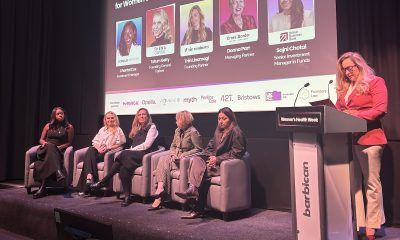
 Entrepreneur4 weeks ago
Entrepreneur4 weeks agoCutting through the noise in femtech – key takeaways from Women’s Health Week 2025
-

 News3 weeks ago
News3 weeks agoAI embryo selection tool wins European approval
-

 News1 week ago
News1 week agoOpinion: Not ‘just stress’ – How hormonal changes affect women’s brain function
-
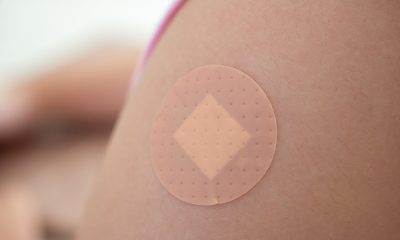
 Hormonal health3 weeks ago
Hormonal health3 weeks agoTestosterone patch shows promise for menopausal women
-

 Features3 weeks ago
Features3 weeks agoFrom SEO to GEO: How women’s health brands can get found in the age of AI
-

 News2 weeks ago
News2 weeks agoTop 7 drug-free solutions for managing PMS and PMDD in in 2025
-

 Wellness3 weeks ago
Wellness3 weeks agoFDA approves new menopause drug to treat hot flashes and night sweats








